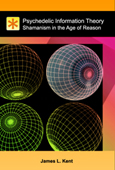
References
Replicable functional magnetic resonance imaging evidence of correlated brain signals between physically isolated subjects.
Richards TL, Kozak L, Johnson C, Standish LJ; Journal of Alternative and Complementary Medicine, 11, 955-963.
OBJECTIVES: Previous electroencephalography (EEG) and functional magnetic resonance imaging (fMRI) experiments have suggested that correlated neural signals may be detected in the brains of individuals who are physically and sensorily isolated from each other. Functional MRI and EEG methods were used in the present study in an attempt to replicate these findings. DESIGN/SETTINGS: Subjects were electrically and magnetically shielded because of the characteristic surroundings of the scanner room. During the experiment, the nonstimulated subject was placed in the scanner with sensory isolating goggles covering the subject's eyes. The stimulated subject was placed 30 feet away and sat in front of a video monitor that presented an alternating schedule of six stimulus-on/stimulus-off conditions. The stimulus- on condition consisted of a flickering checkerboard pattern whereas the stimulus-off condition consisted of a static checkerboard. Stimulus-on/-off conditions were presented in the sequence on/off/on/off/on/off. The duration of these intervals was randomly assigned but consistently provided a total of 150 seconds of flicker and 150 seconds of static. Sessions were repeated twice to assess possible replication of the phenomenon. OUTCOME MEASURES: Changes in fMRI brain activation (relating to blood oxygenation) and EEG signals were measured in the nonstimulated subjects. Changes occurring during stimulus-on conditions were statistically compared to changes occurring during the stimulus-off conditions. RESULTS: Statistically significant changes in fMRI brain activation and EEG signals were observed when comparing the stimulus-on condition to the stimulus-off condition in nonstimulated subjects (p < 0.001, corrected for multiple comparisons). For fMRI, these changes were observed in visual brain areas 18 and 19 (Brodmann areas). One of the subjects replicated the results. CONCLUSIONS: These data replicate previous findings suggesting that correlated neural signals may be detected by fMRI and EEG in the brains of subjects who are physically and sensorily isolated from each other.
Web Resource: www.ncbi.nlm.nih.gov
|
This reference is included in the following Listings: |
